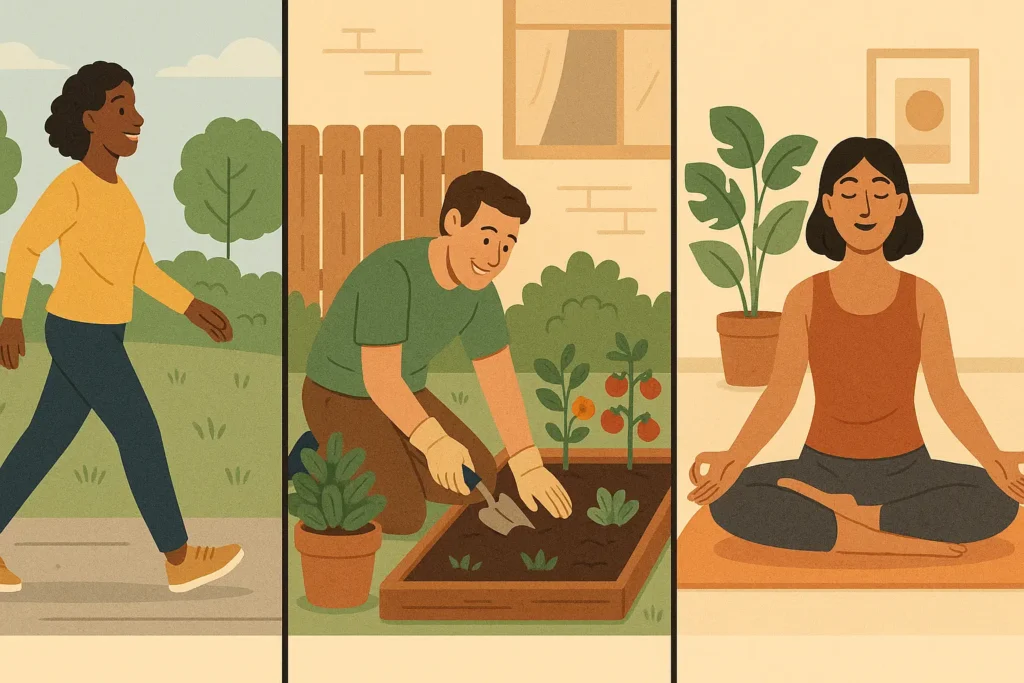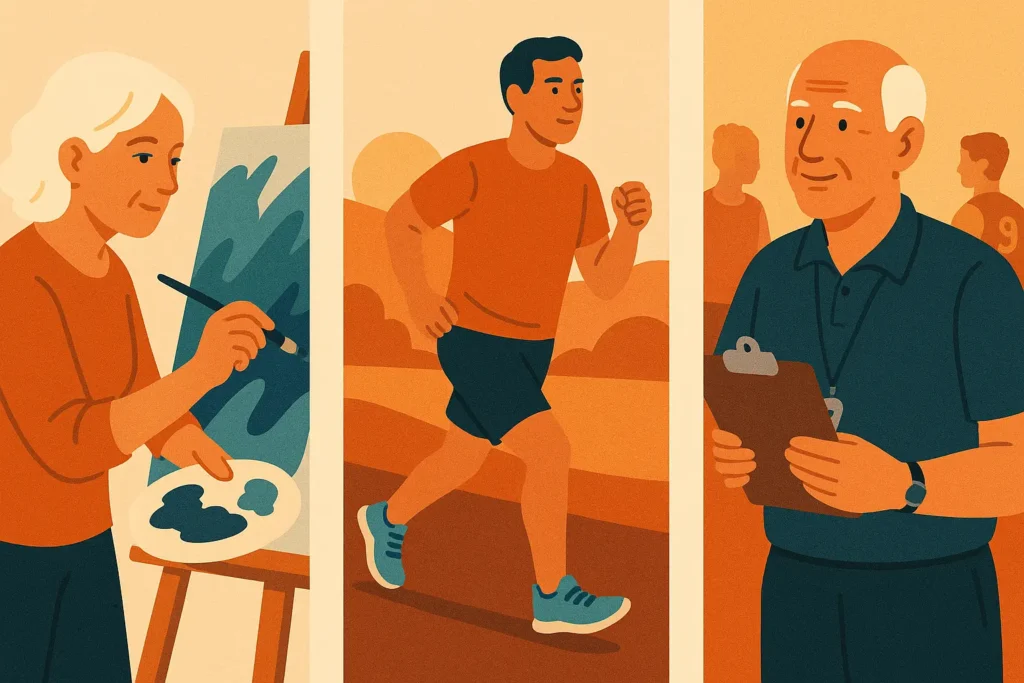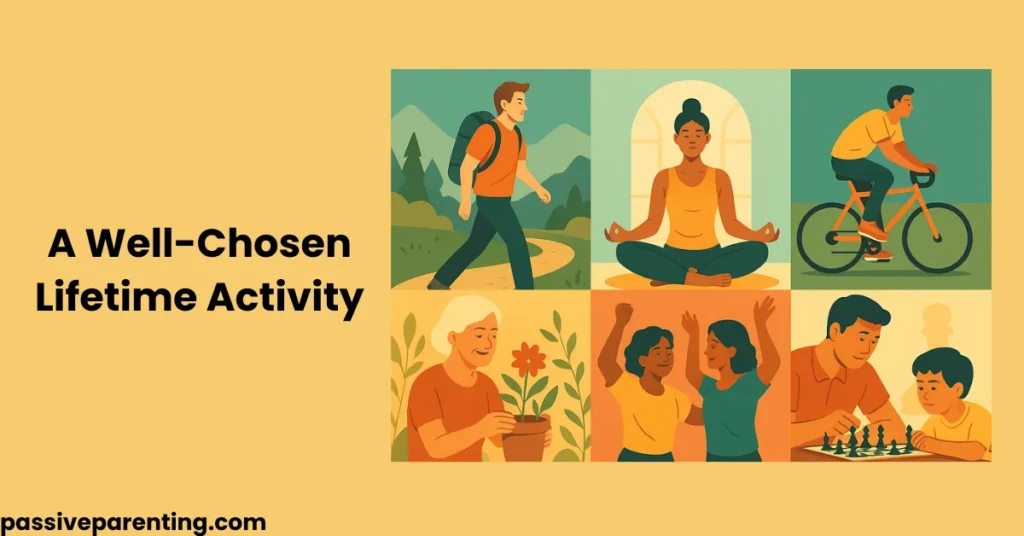In a world where quick trends and fleeting hobbies dominate our free time, investing in a well-chosen lifetime activity may be one of the most enriching decisions a person can make. Unlike short-term obsessions, a lifetime activity provides not only long-lasting interest but also physical, emotional, and intellectual fulfillment throughout different stages of life. In this article, we explore why a well-chosen lifetime activity is something that should hold a person’s interest for a long time, how to choose one, and what benefits it offers over time.
What Is a Lifetime Activity?
A lifetime activity refers to any physical, mental, or recreational pursuit that can be maintained consistently over a person’s lifespan. These activities are sustainable, enjoyable, and often adaptable to life’s changing circumstances. Examples include walking, swimming, yoga, gardening, playing a musical instrument, painting, or even community volunteering.
The core idea is simple: a well-chosen lifetime activity is something that should hold a person’s interest for a long time, encouraging consistent participation and personal growth.
Key Traits of a Well-Chosen Lifetime Activity
Not all activities qualify as lifelong. To be sustainable and worthwhile, an activity should possess these essential qualities:
1. Enjoyment and Personal Interest

You must genuinely enjoy the activity. Without passion or interest, commitment fades quickly. Your choice should align with your natural inclinations, personality, or curiosity.
Examples:
- If you love rhythm and movement, dancing (like salsa or Zumba) can become a joyful lifelong activity.
- Book lovers may find long-term satisfaction in reading clubs, which offer both solitude and social interaction.
- A person fascinated by food and health might develop a lifelong interest in healthy cooking or nutrition-based meal planning.
2. Accessibility and Flexibility

The activity should be easily accessible without requiring excessive resources. It should also adapt to your changing age, health status, or environment.
Examples:
- Walking is one of the most accessible and flexible activities—you can do it anywhere, anytime, at any pace.
- Gardening is another great option that can be done in a backyard, balcony, or even with indoor planters.
- Yoga can be practiced at home or in a class and modified to suit all fitness levels and ages.
3. Mental or Physical Benefits

A great lifetime activity stimulates either the body, the mind, or both. Whether it’s increasing cardiovascular fitness or expanding your creativity, the activity should contribute to overall well-being.
Examples:
- Swimming supports cardiovascular health while being gentle on joints—ideal for all ages.
- Chess or puzzle-solving sharpens critical thinking and supports mental agility as you age.
- Playing a musical instrument like the piano or guitar nurtures creativity and strengthens brain function.
4. Scalability Over Time

As you age or evolve, the activity should remain enjoyable. For example, a young adult might enjoy jogging, and later transition to brisk walking or cycling.
Examples:
- Painting or writing can deepen over time, offering ongoing challenges and satisfaction regardless of age.
- A high-intensity activity like running in youth can gradually shift into power walking or stationary biking as joints require gentler care.
- An interest in team sports can evolve into coaching, refereeing, or mentoring youth leagues later in life.
Why a Well-Chosen Lifetime Activity Should Hold Interest Long-Term
Choosing the right activity isn’t just about filling time. It’s about enriching your lifestyle across decades. Here’s why:
- It sustains motivation without needing external rewards
- It builds routine and consistency over the years
- It supports mental wellness through purpose and identity
- It minimizes burnout by offering joy, not just outcomes
If you’re choosing something for life, it must be something that evolves with you and brings satisfaction at every stage.
Examples of Lifetime Activities That Sustain Long-Term Interest
A well-chosen lifetime activity is something that should hold a person’s interest for a long time, offering joy, purpose, and continuity through all life stages. These activities fall into various categories—physical, mental, creative, and social—each offering unique long-term benefits.
Physical Lifetime Activities
These activities keep the body active, promote cardiovascular health, and are easily adaptable with age.
- Walking or Hiking – Low-impact, easy to start, and great for all fitness levels.
- Swimming – A joint-friendly, full-body workout that can be enjoyed well into older age.
- Yoga or Tai Chi – Combines movement with mindfulness, improving flexibility and mental clarity.
- Biking – Whether outdoor or stationary, it’s scalable and heart-healthy.
- Golf or Tennis – Offers gentle competition and social interaction.
Mental and Creative Lifetime Activities
These activities stimulate cognitive function, foster imagination, and provide emotional release.
- Playing a Musical Instrument – Enhances memory, coordination, and creativity.
- Reading and Writing – Expands knowledge, reduces stress, and supports lifelong learning.
- Painting or Drawing – A therapeutic outlet that nurtures creativity and relaxation.
- Learning New Languages – Improves brain plasticity and cultural understanding.
- Chess or Strategy Games – Sharpens problem-solving skills and mental endurance.
Social and Emotional Lifetime Activities
These pursuits nourish connection, community, and emotional resilience.
- Community Volunteering – Fulfills a sense of purpose and encourages meaningful social engagement.
- Group Dance or Fitness Classes – Combines fun, movement, and bonding.
- Religious or Spiritual Practice – Offers inner peace, routine, and a supportive community.
- Gardening Clubs or Groups – Connects people over shared passions in nature.
- Mentorship or Teaching – Sharing your expertise with others can be deeply fulfilling and impactful.
These examples prove that lifetime activities don’t need to be extravagant or high-intensity—they simply need to align with your values, interests, and lifestyle. When chosen wisely, they can provide years—even decades—of physical vitality, mental stimulation, and emotional fulfillment.
How to Choose the Right Lifetime Activity for You
Here are practical steps to help you choose something you’ll stick with for life:
1. Reflect on Your Interests and Passions
Ask yourself what excites you. Do you enjoy quiet moments or high-energy activities? Are you more drawn to creativity or movement?
2. Consider Your Physical Capabilities
Don’t choose something that could cause injury or burnout. Match your energy and health level to the demands of the activity.
3. Test Before Committing
Try a few options before settling. Attend a local yoga class, borrow a guitar, or join a community group. Let experience guide your decision.
4. Think Long-Term
Choose something that can be enjoyed in youth and old age. If it requires constant physical strain or high financial input, it may not be sustainable.
The Benefits of Engaging in a Lifetime Activity
Engaging in a well-chosen lifetime activity provides lifelong rewards that go far beyond enjoyment:
Improved Physical Health
Regular movement or light exercise improves cardiovascular health, joint function, and endurance—reducing the risk of chronic diseases.
Better Mental Clarity and Memory
Activities like reading, music, or chess stimulate the brain and help maintain sharp thinking, especially as we age.
Stress Relief and Emotional Balance
Purposeful hobbies lower cortisol levels, combat depression, and build resilience. Many people find that hobbies are a form of self-therapy.
Increased Longevity and Quality of Life
Numerous studies show that those who remain mentally and physically active live longer, healthier, and more fulfilling lives.
Meaningful Social Connections
Group-based activities build friendships and support networks, helping combat loneliness.
Maintaining Interest Over the Years
Even the best activities may lose their appeal if not nurtured. Here are ways to stay engaged long-term:
- Set evolving goals (e.g., learn a new song, beat a personal record)
- Celebrate milestones to stay motivated
- Join communities or clubs for social support
- Refresh your approach by learning new techniques or perspectives
Your interests may evolve, but the core of a lifetime activity should be its ability to grow with you.
Common Mistakes to Avoid When Choosing a Lifetime Activity
It’s important to make informed, intentional choices. Here are common mistakes to avoid:
Choosing Based on Trends
Avoid selecting activities just because they’re popular. Fads fade; your interest should not.
Overcommitting Early
Don’t invest a fortune in equipment or memberships before you’re sure the activity suits you.
Ignoring Accessibility
If it requires traveling long distances, expensive gear, or rare resources, you may lose interest quickly.
Not Considering Future Health
An activity that demands high physical performance now might not be sustainable later.
Real-Life Testimonials: Why Choosing the Right Activity Matters
Maria, 45 (Gardening): “I started gardening in my 30s, and it’s still the most peaceful part of my day. My garden changes, and so do I.”
James, 60 (Playing Piano): “Learning piano later in life was humbling but rewarding. Ten years later, I still play an hour daily.”
Aisha, 32 (Running): “I didn’t expect running to become therapy. It started for weight loss, but now it clears my mind.”
These stories show how the right activity becomes a cornerstone of daily joy and purpose.
The Science Behind Lifetime Engagement
- A Harvard Medical School study found that people who maintain physical and mental hobbies in older age experience 30% less cognitive decline.
- The CDC recommends at least 150 minutes of moderate activity per week for adults to maintain health into old age.
- A study in the Journal of Health Psychology revealed that those engaged in creative hobbies reported significantly lower stress levels and better overall well-being.
This evidence further confirms why a well-chosen lifetime activity is something that should hold a person’s interest for a long time.
FAQs: Choosing Lifetime Activities
Final Thoughts: Make It a Lifestyle, Not a Chore
Whether you’re 15 or 55, it’s never too early or too late to choose a lifetime activity. The secret lies in picking something meaningful, sustainable, and joyful. When you invest in such an activity, you’re not just filling your time—you’re enriching your future.
Remember: a well-chosen lifetime activity is something that should hold a person’s interest for a long time. So choose wisely, grow with it, and let it grow with you.
Disclaimer: The content on Passive Parenting is for informational purposes only and not a substitute for professional advice. Always consult a qualified expert for parenting or medical concerns.


